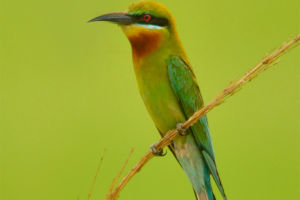The African leopard (Panthera pardus pardus) is one of Africa's most iconic and elusive big cats. Renowned for its stunning coat, agility, and adaptability.
This magnificent predator occupies a crucial position in the food chain, helping regulate prey populations and maintaining ecological balance.
Appearance
The African leopard is both powerful and visually striking:
Coat: Their golden-yellow fur is adorned with black rosettes, providing excellent camouflage in their varied habitats.
Size: Leopards typically weigh between 60-175 pounds (27-79 kg) and measure up to 6 feet (1.8 meters) in body length, excluding the tail. Males are generally larger than females.
Tail: Their long, muscular tail aids in balance and is often used as a rudder during their agile maneuvers.
Habitat and Range
African leopards thrive in diverse environments across sub-Saharan Africa:
Habitats: Found in savannas, forests, mountains, and semi-arid regions, they are highly adaptable.
Range: Their distribution spans countries like South Africa, Kenya, and Namibia, but their populations are fragmented due to habitat loss.
Behavior and Hunting Skills
Leopards are solitary and territorial creatures with exceptional hunting prowess:
Diet: Opportunistic hunters, they prey on antelope, rodents, birds, and even fish.
Hunting Techniques: They are nocturnal, stalking prey with precision before delivering a swift, deadly pounce.
Tree Climbers: Leopards often drag their kills into trees to protect them from scavengers like hyenas and lions.
Social Structure and Communication
Territory: Leopards mark their territories using claw marks, and vocalizations.
Solitary Nature: Except during mating or when a mother is raising cubs, leopards prefer to live alone.
Vocalizations: They produce grunts, growls, and sawing sounds to communicate.
Reproduction and Lifespan
Mating: Leopards mate year-round, with females giving birth after a gestation of about 90-105 days.
Cubs: A typical litter consists of 2-3 cubs, which are born blind and rely on their mother for survival during the early months.
Lifespan: In the wild, leopards live around 10-15 years, while in captivity, they can reach up to 20 years.
Ecological Importance
As apex predators, African leopards are crucial for ecosystem health:
Prey Control: They regulate populations of herbivores, preventing overgrazing.
Indicator Species: Their presence signals a well-balanced, biodiverse environment.
Conservation Status
The African leopard faces significant threats:
Habitat Loss: Deforestation and urbanization are shrinking their habitats.
Poaching: Leopards are hunted for their beautiful coats and body parts.
IUCN Status: They are listed as “Vulnerable,” with conservation efforts focusing on habitat protection and anti-poaching measures.
Fun Facts About African Leopards
They can leap over 20 feet horizontally and 10 feet vertically.
Their night vision is seven times better than that of humans.
Each leopard’s rosette pattern is unique, like a fingerprint.
Lykkers, the African leopard teaches us the art of stealth and resilience. Let their strength inspire you to face life’s challenges gracefully.


